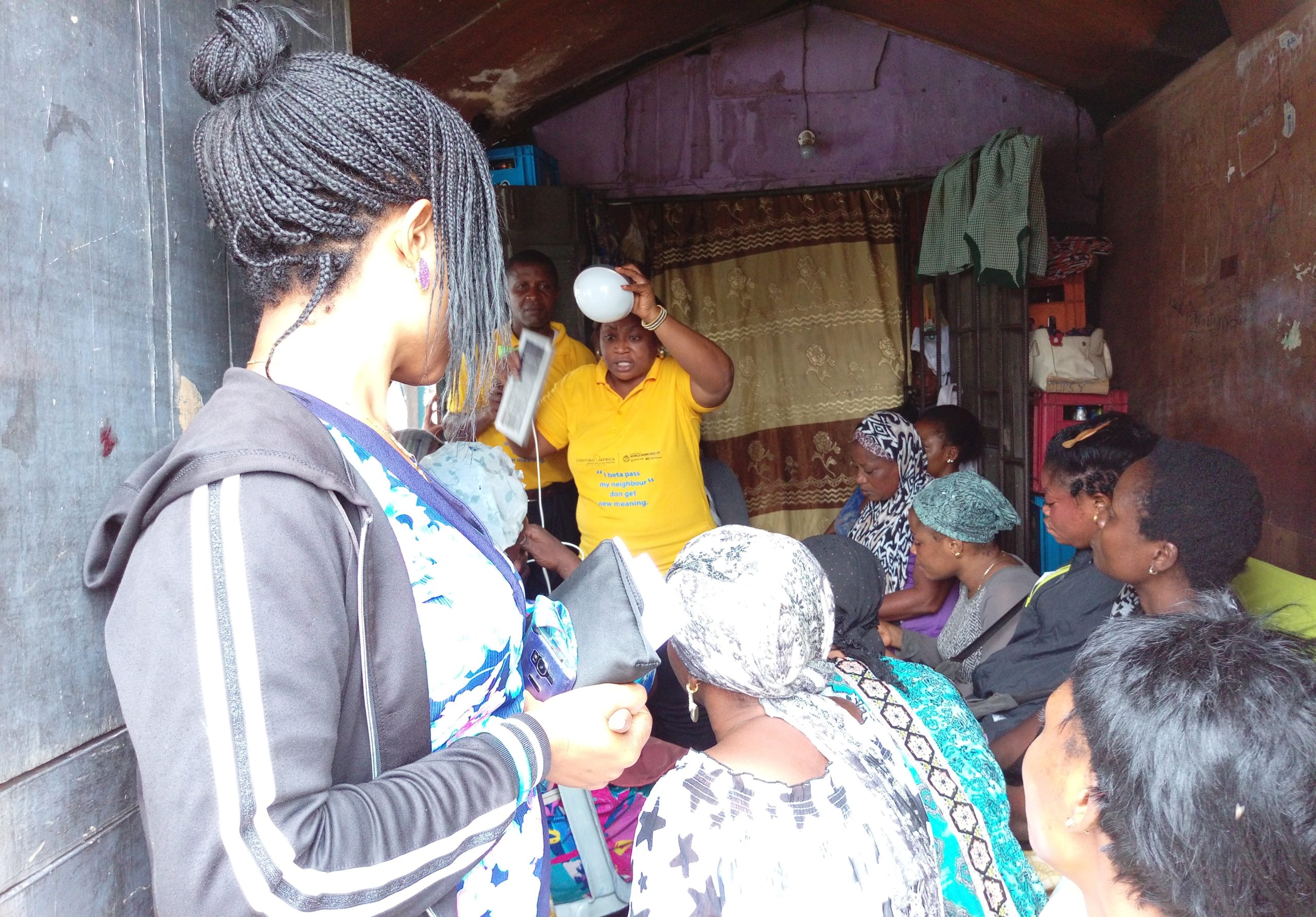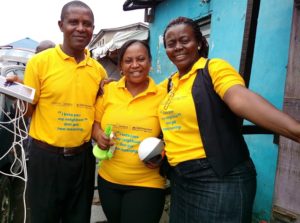Lighting Africa/Nigeria: Tackling Energy Poverty At Its Source

Access to energy – or the lack of it – significantly impacts an individual’s ability to live above the poverty line. Basic needs such as food, housing, shelter, education, and finance are all adversely impacted by energy poverty and its limitations on a community.
Energy poverty makes people rely on expensive, hazardous, and polluting sources of lighting such as candles, kerosene lanterns, and dry cell battery torches. It exposes consumers to dangerous fumes that cause respiratory tract infections and other negative health impacts. It also hinders the ability of medical personnel to deliver quality health services in rural areas. Often, critical surgical and childbirth procedures have to be carried out using mobile phone torchlight or, worse, kerosene lanterns.
Spending on reoccurring fuel costs for these types of lighting also leaves a huge hole in the finances of the poorest. Further, it severely limits the ability of children to study at night, to improve their academic outcomes and, to possibly, escape this cycle of poverty.
It has been suggested that tackling energy poverty head-on will help move the needle on most of the 17 United Nations’ Sustainable Development Goals (SDGs). According to SE4ALL, “from job creation to economic development, from security concerns to the full empowerment of women, energy lies at the heart of the [SDGs].” Energy access itself is listed as UN Sustainable Development Goal Number 7. It is, therefore, not surprising that development agencies have made energy access a front-burner issue. Lighting Africa studies indicate that low-income households in Africa spend up to $17 billion annually on expensive but low-quality, unsafe lighting alternatives. Today, close to 600 million people in Africa are without access to electricity. This number represents 60 percent of the world’s 789 million people who do not have any access to electricity. According to the International Energy Agency (IEA), 530 million people will still be without electricity access in 2030 if grid extension programs progress at their current pace.
In Nigeria, the Rural Electrification Agency (REA) estimates that nearly 50 percent of Nigerians (or about 90 million people) do not have access to grid electricity, while millions of those connected to the grid have less than 12 hours of electricity every day. According to The Dirty Footprint of the Broken Grid, a 2019 study from the International Finance Corporation, Nigeria has one of the largest fleets of petrol/diesel generators globally, with three million generators – or one for every 60 people. These generators, no doubt, contribute to environmental pollution and other hazards. There are, however, no known reliable estimates for the number of kerosene lanterns belching smoke into the atmosphere every night; nor the number of candles burnt every night in search of a flickering light. Unmistakably, the number of lanterns and candles pressed into duty every night will run into millions at a time that even upscale shopping malls conspicuously display candles and kerosene lanterns among their ware.
This energy situation in Nigeria both poses a challenge and provides an opportunity. It is a challenge to have such a huge number of people shut out of the opportunities afforded by modern energy services on a ‘normal’ day. In the current unprecedented Covid-19 global crisis that has seen majority of the population managing home/remote-based productivity, the lack of access to energy is that much more devastating.
There is however an opportunity for governments, private sector actors, other stakeholders and the people themselves to explore decent alternative sources of energy that not only deliver on basic needs but also support the habitability of the earth for generations yet unborn.
In an ideal world, everyone ought to have access to electricity. But our world is less than ideal and energy access is expensive. While the government appreciates the value of extending the grid to every nook and cranny of the nation, the cost of such an ambitious project remains prohibitive. Even more daunting would be the cost of operations, as the reality is that some consumers can simply not afford electricity bills, even with very low energy consumption. Therefore, distributed energy, through simple plug-and-play solar devices -solar lanterns and solar home systems (SHS) – constitutes a viable option for energy access. REA estimates that some rural households spend as much as US$6 per month on kerosene and battery-operated torchlights. Today, some solar devices that can deliver clean lighting, charge mobile phones, and last for as much as four years cost as little as US$30 – about the same amount that would spent on poor alternatives in just five months.
The off-grid solar energy industry has, over the past 10 years, enabled access to these alternatives to low income households. Supported by the World Bank Group’s Lighting Global, Lighting Africa, and Lighting Asia, this industry has boldly staked its claim to helping the world’s poorest have clean lighting and enjoy basic energy services by adopting solar products.
For instance in Kenya, Lighting Africa has played a key role in developing an off-grid energy market that is second globally only to India. The country has gone a step further by recognizing solar-home-kit providers as essential services providers during the COVID-19 outbreak. A number of governments in Nigeria also took the proactive step of recognizing providers of these kits as businesses providing essential services.

The Lighting Africa/Nigeria Program launched in 2015 and has so far enabled nearly six million people to have access to clean energy. Working with other stakeholders, it has catalyzed a robust ecosystem that includes manufacturers, distributors, retailers, and financial intermediaries to deliver hitherto unavailable services. To help consumers understand solar products and how to use them, the program has deployed integrated consumer education campaigns that have reached over 70 million people. It has worked with microfinance institutions to facilitate the disbursement of micro-loans worth nearly US$6 million to help their customers –over 80 percent of whom are women– purchase solar products. It has trained hundreds of technicians to repair products and brought over 9,000 retailers into the off-grid solar value chain.
These developments, laudable as they are, need sustainability. To this end, the Standards Organisation of Nigeria (SON) has worked with the Lighting Africa Program to adopt global standards for off-grid energy systems. Its Governing Council recently approved the adoption of the International Electrotechnical Commission (IEC)’s standards for off-grid energy products. The adoption and subsequent implementation of the standards will protect consumers against counterfeit and substandard products, and ward off the risk of market spoilage.
Not long ago, the Federal Government of Nigeria launched the Nigeria Electrification Project (NEP) with financing support from the World Bank (US$350 million) and AfDB (US$200). NEP is a first-of-its-kind project in Nigeria to deploy off-grid energy systems to address the energy deficit in the country. Such an ambitious project not only affirms the viability of distributed energy as a strong option for mass electrification but also provides tangible wins for all stakeholders in the sector, including consumers whose energy challenges are now being tackled. It also runs in synchrony with the government’s Vision 30-30-30 which aims to generate 30GW of energy by 2030, 30 percent of which should come from renewable energy sources. Nigeria will also benefit from the Lighting Africa-supported Regional Off-Grid Electrification Project (ROGEP) which aims to increase electricity access to households, businesses, and communities through modern off-grid electrification across Western Africa. As one of the two pilot countries under ROGEP, suitable and sustainable mechanisms to electrify public institutions in Nigeria will be identified.
So, are we there yet? Definitely not. More work needs to be done. And more stakeholders need to stand up and be counted. For instance, commercial banks need to explore the opportunities in financing household solar projects. So far, microfinance institutions have played a more significant role, but commercial banks can bring scale to the sector that is comparable to the revolution witnessed in the telecoms industry in the early 2000’s. Polytechnics and universities should consider developing the human resources to handle both the technical and managerial sides of off-grid solar businesses. Business people need to ensure that they produce or market only those products that have passed global quality standards. Investors need to fund and accelerate the uptake of climate smart agriculture innovations that enhance food security, for instance solar irrigation and cold storage, which will be an integral cog in Africa’s post Covid-19 recovery effort.
On its part, government should look into the business environment, especially as regards tariffs, for the nascent off-grid energy sector. Consumers will need to develop their solar literacy in order to make informed decisions about their off-grid energy options for household and productive uses. With this kind of collaborative work, the vision of providing energy for all by 2030 becomes achievable.
By Allwell Nwankwo, Program Manager, Lighting Africa/Nigeria

